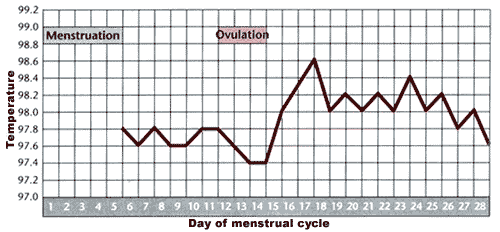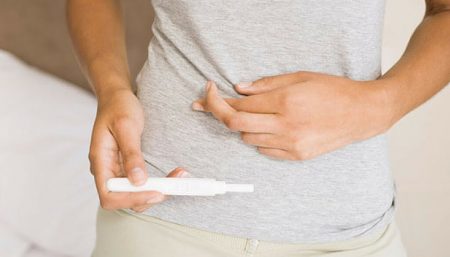Infertility has been defined as the inability of a couple to conceive after one year of regular intercourse without the use of contraceptives. The definition has also come to include couples who are able to conceive but, due to repeated miscarriages, are unable to carry a pregnancy to term.
The World Health Organization (WHO) estimates that approximately 8-10% of couples experience some form of infertility problem. On a worldwide scale, this means that 50-80 million people suffer from infertility. However, the incidence of infertility may vary from region to region.
The chances of achieving pregnancy for a couple in a given cycle depend upon many factors, and the most important ones are:
The age of the woman. As age increase the number of eggs and their quality starts decreases. After puberty, women become less fertile as they age. Fertility declines sharply after the age of 35, then again between 37 and 40. If possible, women should start to build a family in their twenties or early thirties. In addition, fertility treatments tend to be more successful in younger women, so seek treatment as soon as infertility is suspected. Older women who are infertile can have success with donor eggs.
Frequency of intercourse, couples who have less frequent intercourse have diminished chance of conceiving. A couple is only fertile for about six days each month. Using the basal body temperature, vaginal secretions, and other fertility signs, a couple can be certain that they are having intercourse when the woman is most likely to conceive. Much is made of using the correct position and elevating the woman’s pelvis, but during the most fertile times of the month, sperm are able to swim up to the uterus from any position. However, many consider the missionary position (man on top, face to face) the most successful because it allows deep penetration. The woman can elevate her pelvis with a pillow during intercourse and for about 15-20 minutes afterward so that gravity can assist the sperm in reaching their goal. After 20 minutes, all of the motile sperm will have made the trek. Any “leakage” won’t reduce the likelihood of pregnancy.
“Trying time” that is how long the couples have been trying to get pregnant. This is an important concept. The longer a couple has been trying to conceive without success, the lesser their chances of getting pregnant without medical help.
The presence of fertility problems. Example: Polycystic Ovary Syndrome (PCOS)
![]() Possible Causes of infertility
Possible Causes of infertility
There are numerous causes of infertility. In men, these include environmental and hormonal factors that affect the production of healthy, motile sperm and normal semen, as well as blockages that affect the delivery of sperm. In women, the causes are more varied since she plays a greater role in reproduction. First, one of the organs involved in reproduction may be absent, mal-formed or non-functional such as damaged fallopian tubes. Less frequent causes include, for example, endometriosis and hyperprolactinemia.. Second, the organs may be normal, but the complex hormonal feedback system that is necessary to support follicular development, ovulation and implantation of the fertilized egg may be disrupted.
Other causes
Body weight
Women who are significantly overweight or underweight can face difficulties in getting pregnant. Low weight or excessive weightloss can lead to decrease in important hormonal “messages” that the brain sends to the ovaries in women and testes in men. Gonardotropin releasing hormone(GnRH) is produced in the part of the brain called Hypothalamus. The release of GnRH leads to release of hormonal messangers LH and FSH by the pitutary glands. LH and FSH are critical for the development of eggs in ovaries and sperm in the testes.
Similarly being overweight or obese can affect the hormonal signals to the ovaries and testes. Increased weight can also increase insulin levels in women which in turn may cause the ovaries to overproduce the male hormones and stop releasing eggs. Weight loss is the best plan of action in such cases supported with clomiphene or gonadotropins. Body fat plays a critical role in human reproduction. Both excess and deficiency of body fat lead to reproductive failure. Body weight disorders is one of the first potential causes of reproductive failure in both men and women. This is a problem that can be corrected by the affected individual and the infertile couple.
Diet & exercise
Foods rich in manganese (oats, wheat germ, rye bread and peas) promote the action of oestrogen, and vitamin B’s (wholegrains such as brown rice, wheat germ, pulses oats and green vegetables), involved in oestrogen metabolism. Their deficiency can hamper pursuing pregnancy. Soya beans and wholemeal bread will provide magnesium.
Infertility is associated with low vitamin D, and PMS can be completely reversed by addition of calcium, magnesium and vitamin D. Vitamin D supports production of estrogen in men and women. PMS has been completely reversed by addition of calcium, magnesium and vitamin D. Menstrual migraine is associated with low levels of vitamin D and calcium. Ten minutes of daily exposure of the arms and legs to sunlight will supply us with all the vitamin D that we need as humans can manufacture vitamin D from cholesterol by the action of sunlight on the skin.
Proper diet and exercise is essential to maintain a healthy weight. At the same time extreme exercise can lead to reduced sperm production in men and lack of ovulation in women by decreasing the brain message to the testes and ovaries. It is impossible to know how much exercise for a person is too much. Generally running more than 10 miles a week is considered too much when trying to conceive. Try bringing about modifications in your exercise routine in order to treat reproductive problems.
Smoking
Smoking is a known contributor to infertility problems in women and can lead to an increased rate of miscarriage. Women who smoke regularly also may enter menopause at an earlier age because of the damaging effect of tobacco smoke on ovaries. Men who smoke may have diminished sperm function.
Drugs and Alcohol
Alcohol is known to cause structural and developmental defects in a fetus. This group of disorders is termed the “Fetal Alcohol Syndrome.” It is best to avoid drinking alcohol during the course of your infertility treatment or during pregnancy. Marijuana use in men leads to poor sperm counts that take many weeks to recover after exposure. Other recreational drugs can lead to other significant problems for pregnancy. At the same time it is desirable to limit the intake of tea, coffee, soft drinks which contains caffeine.
Vitamins
Women who take folic acid before they conceive reduce their risk of neural tube defects in the fetus by 50%. It is recommended that all women undergoing infertility treatment take at least 0.4 mg of folic acid (folate) before they conceive and during the course of their pregnancy. Some high potency vitamins may have a detrimental effect in pregnancy (i.e. too high level of vitamin A).
 Medication
Medication
Regular medications of modern medicine in certain ailments like ulcer, high blood pressure etc, causes low sperm count & negative side effects that causes infertility problems in both man & woman.
STDs & PID
Pelvic inflammatory disease (PID) is a major cause of infertility in women. Any sexually transmitted disease (STD), such as gonorrhea or syphilis, may cause PID, which can lead to infertility. Prevent STDs by abstaining from sexual intercourse or by using condoms.
Stress
Does stress cause infertility or does infertility cause stress? Most doctors agree that reducing stress won’t ensure pregnancy, but it may help a couple cope with infertility and making treatment decisions.
Eating Disorders
The eating disorders anorexia and bulimia can have long lasting impacts (several years) on fertility. Women with these conditions may not ovulate even if they menstruate. Eggs may not develop properly. In these cases, treating the disease is essential to restoring fertility.
![]() Evaluation of Female Infertility
Evaluation of Female Infertility
Infertility Evaluation process involves several steps. The steps in the evaluation portion of the process will include a complete history, physical examination and specific tests that should be clearly outlined by your physician at your first visit.
The physician should provide her patient with the following information:
The 4 Goals In The INFERTILITY EVALUATION for women are:
- To determine potential causes so that effective therapy can be given.
- To dispel misinformation and provide accurate information.
- To create an environment of emotional support.
- To determine the proper time of discontinuing investigation and treatment.
1) To determine potential causes so that effective therapy can be given.
Inability to conceive can be very frustrating & depressing , more so when the “trying time” has been going on for too long . We completely understand that motherhood is a blessing for every women. In the light of the same WF health & fitness experts will try in the best of their capacity to answer your innumerable doubts and questions through this article so as to facilitate you in taking a decision to overcome this crisis .
To understand the possible causes it is important that you consult a doctor who will go into a complete medical, surgical, sexual, social and family history, as a part of initial evaluation.
|
Possible questions your doctor might ask Your medical history includes questions concerning illnesses or diseases you & your partner have had or have including what medications, both prescription and over-the-counter preparations you currently use. Consumption of tobacco products, alcohol, marijuana or other street drugs. Also the amount of caffeinated beverages you drink may be asked as all of these may adversely affect reproduction. Questions about your previous contraceptive practices such as use of an Intrauterine Device (IUD) . Frequency of sexual intercourse. How long you have been attempting pregnancy . Your partners inability to achieve or sustain an erection (impotence) can also be a factor, as can pain on ejaculation if you experience or pain with intercourse, which is called (dyspareuia). A history of previous pelvic infections or sexually transmitted diseases . Your physician will also ask you questions concerning your menstrual history such as how old were you when you got your first period, when was your last period, how often does it come and how many days does it usually last. Questions concerning your bowel and bladder habits and whether you experience pain or bleeding with these . How you and your partner are dealing with the intense emotional issues involved with infertility as it can be a life crises for many couples. |
2) To dispel misinformation and provide accurate information.
It must be the goal of a health provider to help patient in doing away with the misconceptions regarding fertility/infertility and provide them easy to understand accurate information. To begin with they need to be listened to, before starting upon any advice . It is very important to understand patient’s state of mind, put their doubts at rest and provide them with essential information.
3) To create an environment of emotional support.
Emotional support is an essential part of every therapy , more in the case of women suffering from this life crisis. Feeling alone, anxious, or even out of control are common reactions. The woman should be convinced that her behavioral reactions are normal and unpreventable .It might seem hard to seek out emotional support because of the fear of being left emotionally out of control at a time when they are already experiencing an enormous loss of control around their body’s ability to perform a basic function.
Try to come out with your problem and discuss it with your friend or a counselor. For some meeting with a group of individuals struggling with infertility is more comfortable.
A counselor can help with questions about multiple pregnancy, pregnancy loss, and when and whether to start or stop treatment. Having a regular place to “leave” your emotional burdens can also help free you up to enjoy life more fully and spend less time obsessing about infertility
Whatever you decide, know that you are not alone in this struggle if you don’t want to be, and feel free to talk with us about your frustrations and fears.
4) To determine the proper time of discontinuing investigation and treatment.
Treatment prescribed by the gynaecologist might need to be repeated in 6-7 cycles. If results are not achieved, your doctor might advice to other treatments options available.
![]() Tests of Infertility in female
Tests of Infertility in female
There are many potentially useful tests that can be obtained as part of the infertility evaluation for women. However, therapeutic options largely depend on the results of three fundamental tests:
Uterine Structural Tests
(i.e. for patency of fallopian tubes and anatomy of uterus)
- Hysterosalpingography (HSG)
- Office Hysteroscopy
- Sonohystogram
Ovarian Reserve Testing
- This includes a Cycle Day 3 FSH or preferably, a Clomiphene citrate Challenge Test.
- There are several additional tests that have been used to evaluate infertility.
 Tests for Ovulation
Tests for Ovulation
Problems of ovulation (egg release from the ovary) account for approximately 25% of infertility and may be suggested on the basis of the history and physical examination.
If your menstrual periods occur at monthly intervals and you also have breast tenderness, fluid retention, irritability and menstrual cramps, then your cycles are usually ovulatory, but not necessarily. Therefore some test of ovulation is necessary:
- Urine LH Testing
- Blood LH Testing
- Basal Body Temperature Graph (BBTG)
- Ultrasound Monitoring
- MidLuteal Progesterone Testing
- Endometrial Biopsy
More Tests in the Female
There are many tests that have been designed to evaluate potential causes of infertility in women. Very few of these tests, however have been well standardized or even definitively associated with infertility. Definitive therapy relating to abnormal test results is also lacking. The following tests although sometimes suggested are generally no longer recommended as part of the basic infertility evaluation:
- Post Coital Test (Sims-Huhner Test, PK)
- Cervical Mucus Penetration
- Cervical Cultures
- Immune Testing
- Hormone Testing
- Laparoscopy
- Diagnostic tests are guided by the history and physical examination and include simultaneous analysis of both you and your partner. Testing implies that the knowledge of the result can be used to guide therapy leading to a successful pregnancy.
There are many tests that have been suggested. However, perhaps the most cost-effective and arguably the most clinically useful are a semen analysis, an intrauterine structural study and a test of ovarian age (ovarian reserve) and tubal patency tests.
Infertility testing in women is designed primarily to determine anatomical factors, most commonly abnormalities within the uterine cavity, and problems with ovarian function and tubal patency.
 If you think that you are having difficulty becoming pregnant, you should seek the assistance of your physician. There are several types of treatment. Appropriate treatment depends on your particular situation or underlying medical or surgical condition largely depends on the reason thought to be responsible for difficulty in becoming pregnant.
If you think that you are having difficulty becoming pregnant, you should seek the assistance of your physician. There are several types of treatment. Appropriate treatment depends on your particular situation or underlying medical or surgical condition largely depends on the reason thought to be responsible for difficulty in becoming pregnant.
These treatments may range from the simple like appropriate timing of intercourse to the complex, high-tech therapies like in vitro fertilization (IVF) in which medications are given to induce the production of eggs that can be collected and then put together with sperm in the laboratory so that fertilization occurs. The fertilized eggs can then be cultured for 3 to 5 days followed by embryo transfer to the uterus.
IVF (In Vitro Fertilization)
IVF has been used safely and effectively for more than two decades. In a typical IVF procedure, a woman is treated with fertility drugs to regulate her menstrual cycle and stimulate the development of higher-quality eggs. This process helps to ensure that a sufficient number of healthy eggs are available for fertilization. Eggs are then “retrieved” or collected and prepared for insemination using sperm from the male partner or a donor. Fertilization occurs in a laboratory dish specially prepared with a culture medium that supports and nourishes the fertilized eggs. Within about 72 hours after fertilization, embryos are transferred into the woman’s uterus.
Since the introduction of IVF, there have been many other important developments that have made infertility treatment even more effective for both men and women:
In vitro fertilization with endometrial cell co-culture is a special technique for couples with poor embryo quality where cells from the woman’s uterus are used to enhance development of fertilized eggs. CRMI refined this procedure using the woman’s own endometrial cells rather than cells from animals.
Intracytoplasmic sperm injection (ICSI) is a procedure where a single sperm is selected and delivered directly into a woman’s egg. ICSI is an effective option for men with low sperm count or sperm that cannot reach the egg successfully.
Cryopreservation is the ability to freeze and store embryos that are not transferred right away. This process can allow couples to achieve a pregnancy later, either after a first birth or following medical treatments that might affect fertility such as chemotherapy for cancer treatment.
Preimplantation genetic diagnosis (PGD) can be used to identify embryos that do not carry the gene for certain inherited diseases (such as cystic fibrosis and sickle cell anemia). This capability greatly reduces the risk that these diseases will be passed on to children.
For male factor infertility, our comprehensive services include microsurgical repair of obstructions and vasectomy reversals, surgical repair of varicoceles, and epididymal and testicular sperm retrieval for use with IVF and ICSI.
![]() Diet & Lifestyle modifications
Diet & Lifestyle modifications
There are several important lifestyle changes that you can do that will not only improve your overall health but may also positively increase your chances for a successful pregnancy. Good lifestyle choices and habits promote good health for years to come.
|
Your diet should include a variety of selections from the 5 basic food groups.
Basic rules for a good weight reducing diet include:
When dieting goes too far it can lead to being too thin and can lead to very serious eating disorders, anorexia nervosa and bulimia, which are also associated with difficulty becoming pregnant. Anorexia nervosa is characterized by a morbid fear of fatness that leads to drastic dieting to the point of self starvation. Bulimia is characterized by binge eating (overeating) and purging (forced vomiting). These eating disorders can be treated with counseling and sometimes medication for depression which often is associated with eating disorders. If you are unsure whether you have an eating disorder the following questions may be helpful:
|
Substance abuse could affect a person’s ability to conceive, so if you’re a substance abuser who still wants to have kids, we recommend that you sign up for alcohol and drug rehab programs the soonest possible time.
Disclaimer
The Content is not intended to be a substitute for professional medical advice, diagnosis, or treatment. Always seek the advice of your physician or other qualified health provider with any questions you may have regarding a medical condition.




